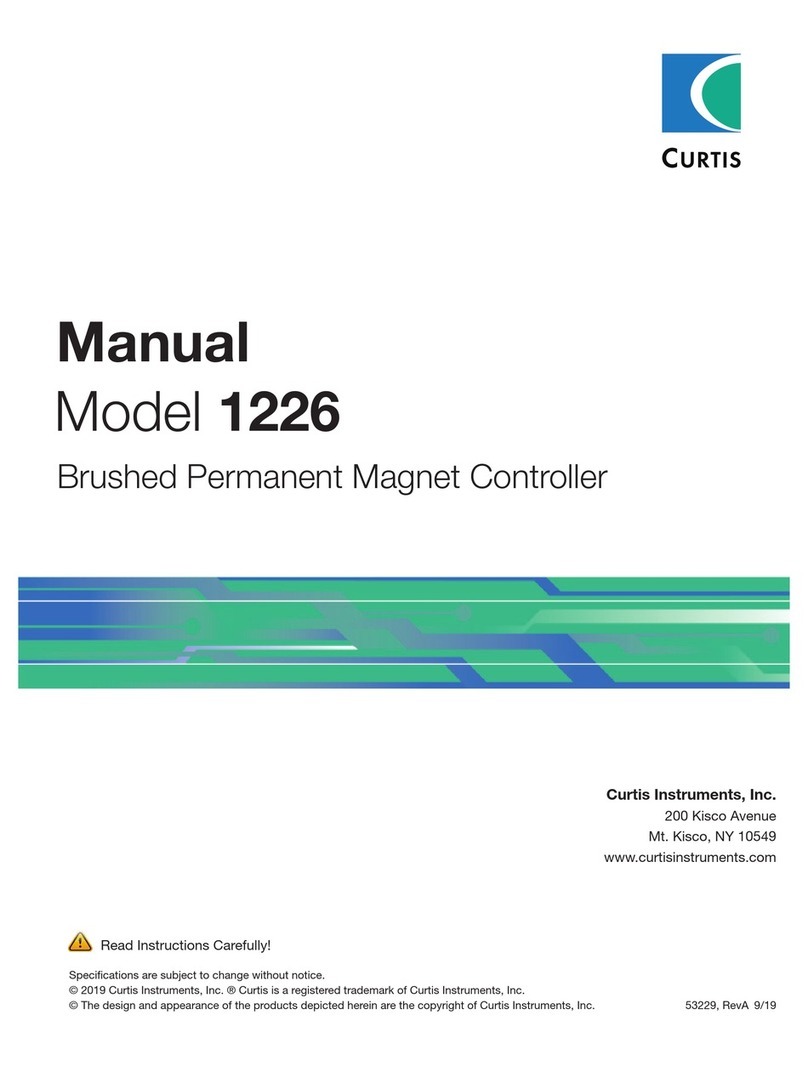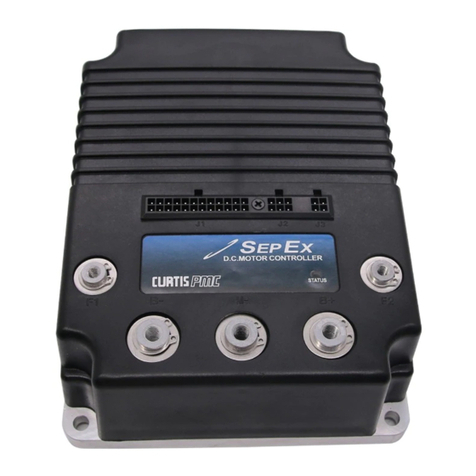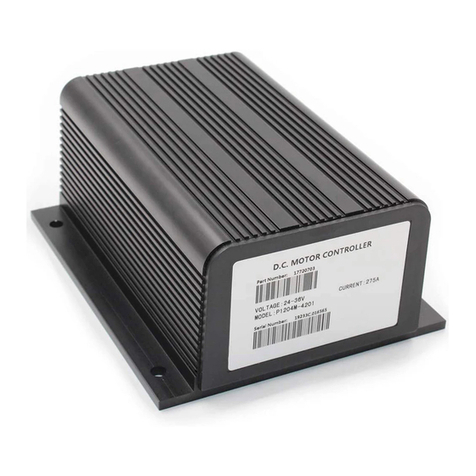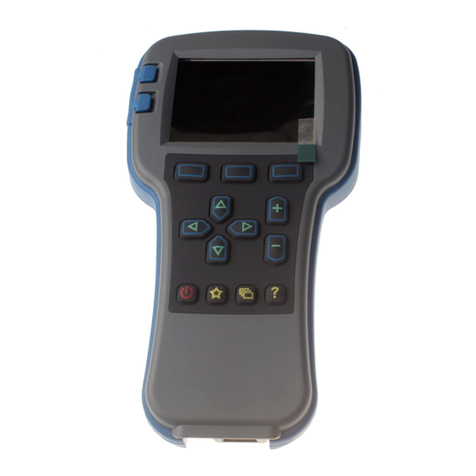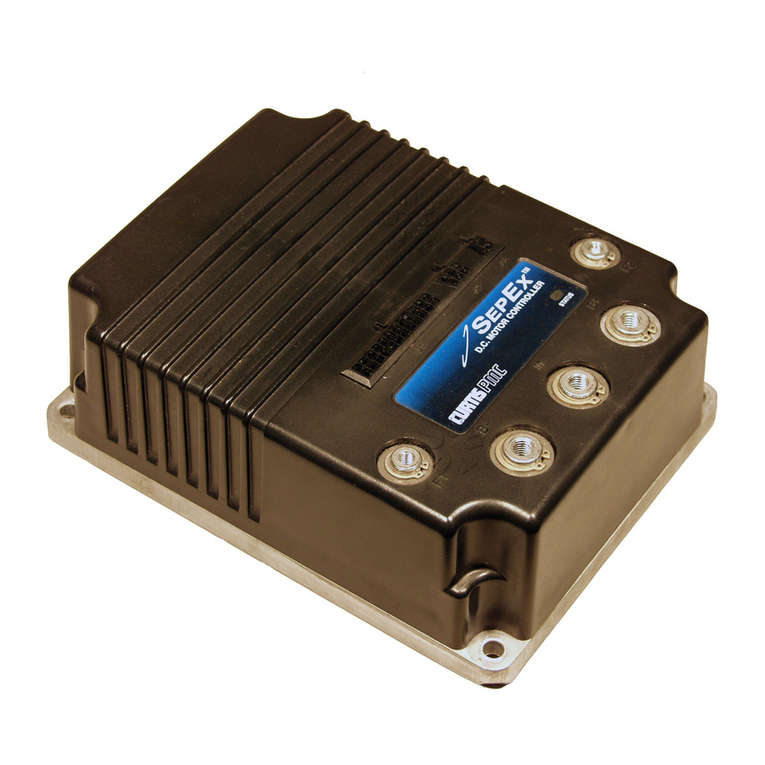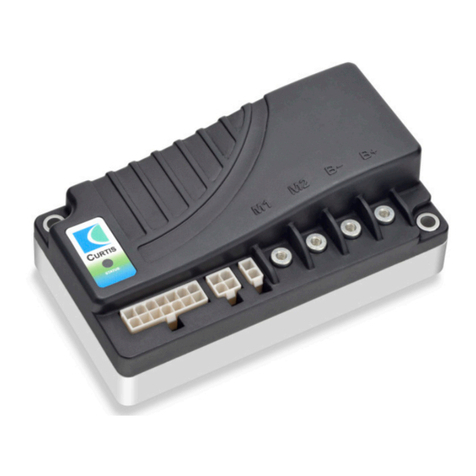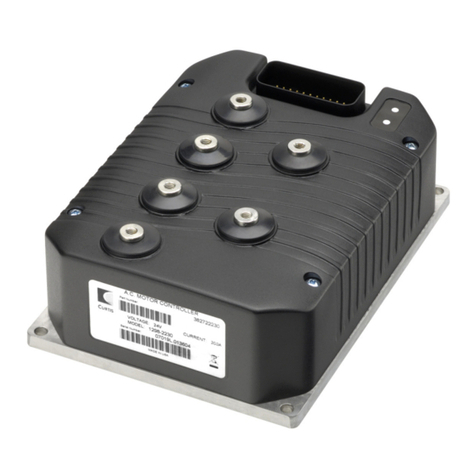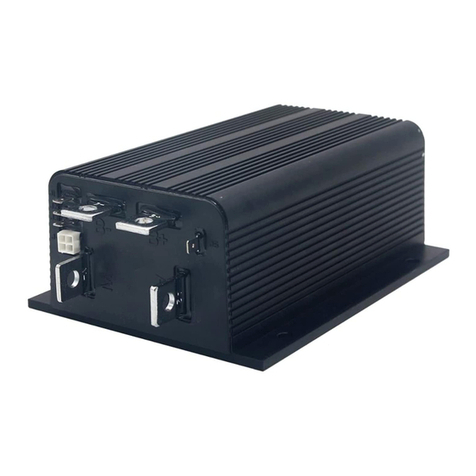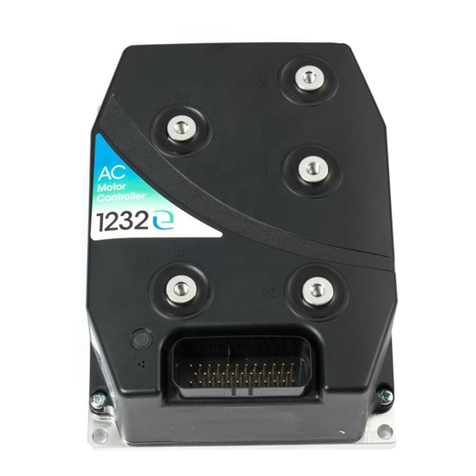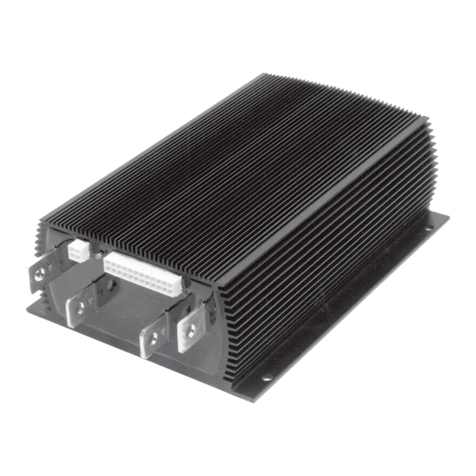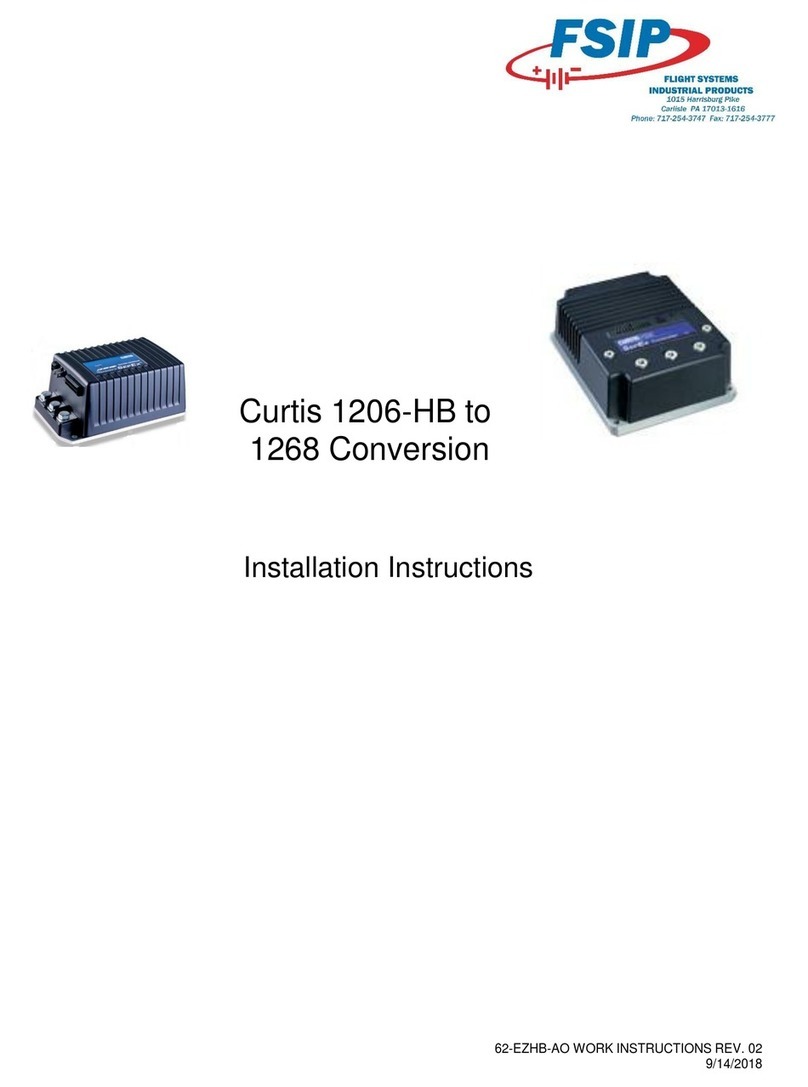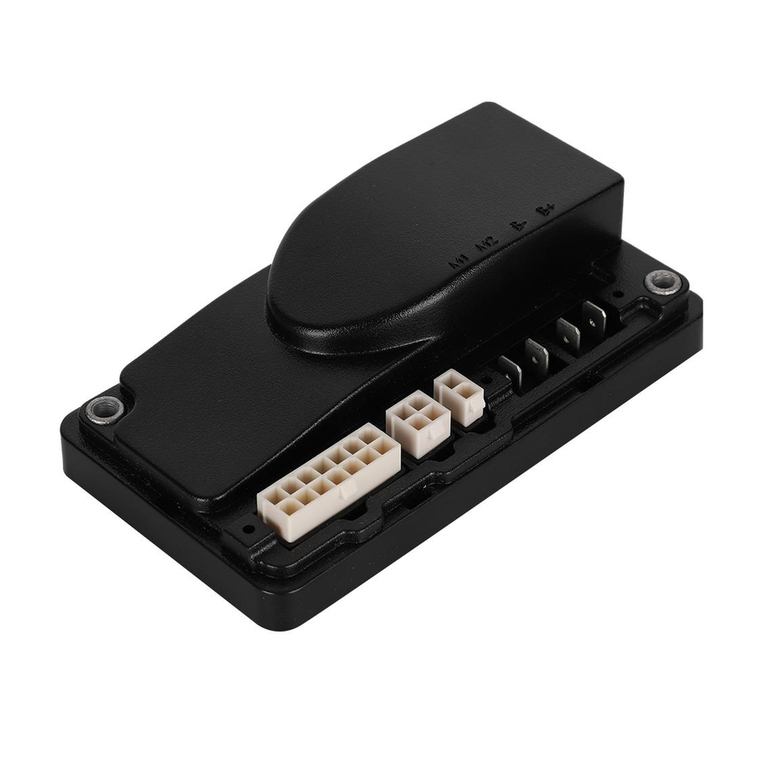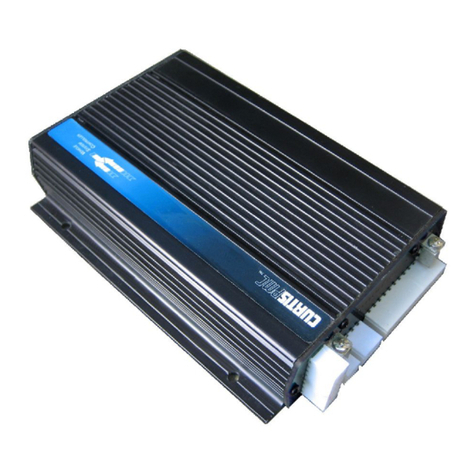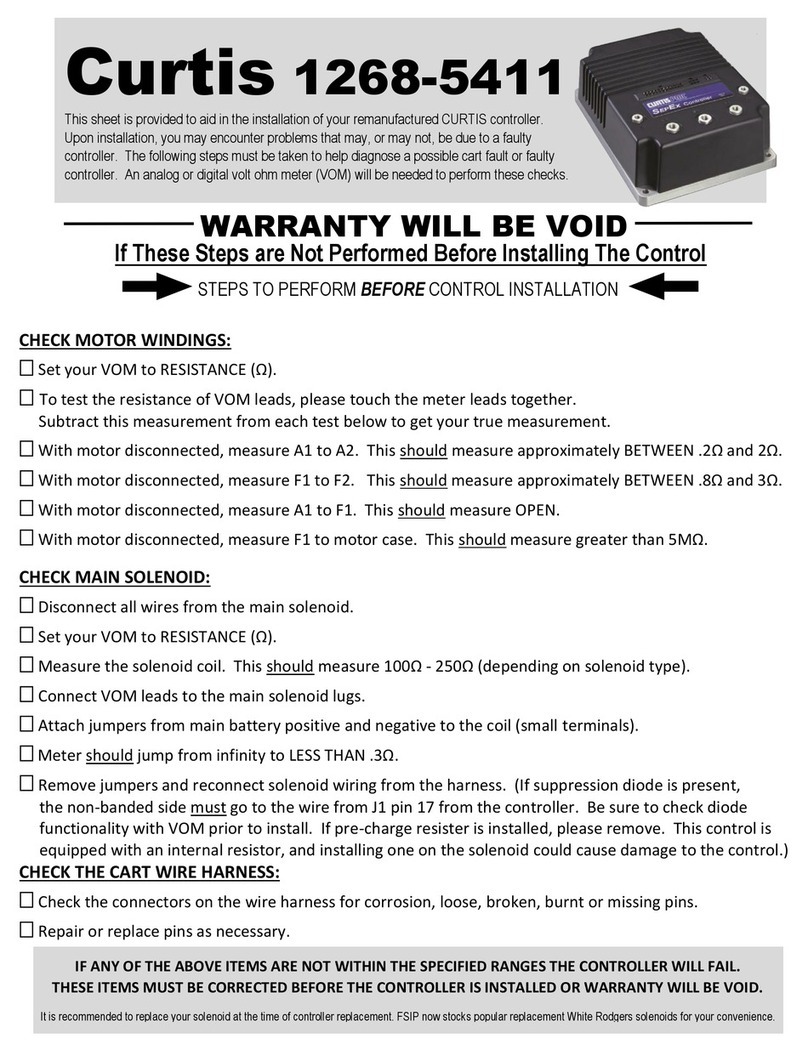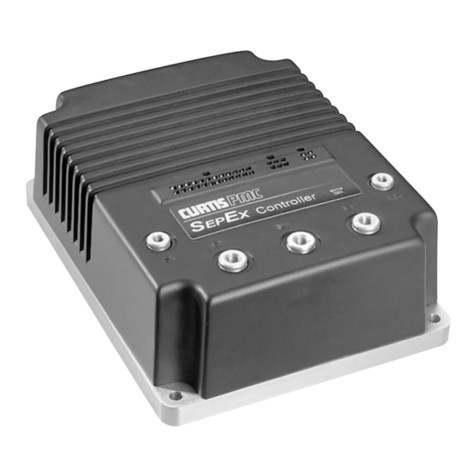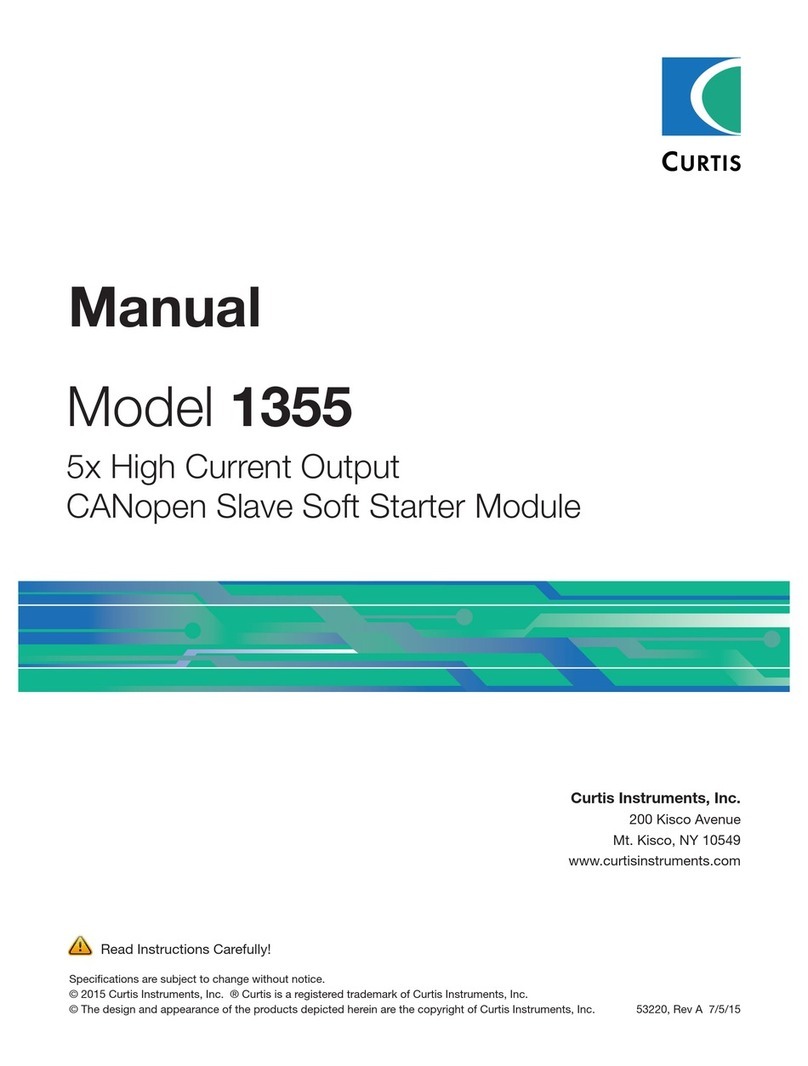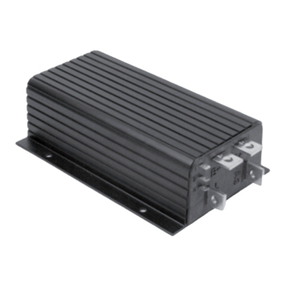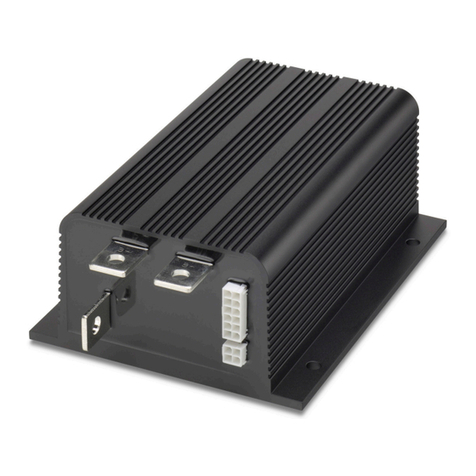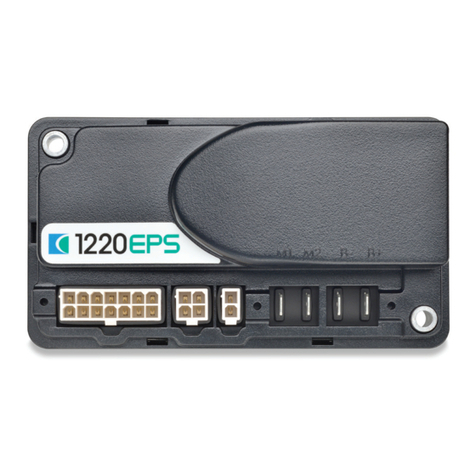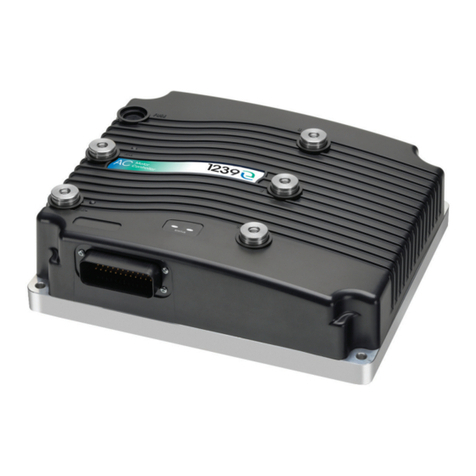
Curtis 1207B Manual iii
CONTENTS
1. OVERVIEW ..............................................................................1
2. INSTALLATION AND WIRING .............................................3
Mounting .............................................................................3
Connections: Low Current ..................................................4
Connections: High Current .................................................5
Wiring: Standard Configuration (Series Motor) ...................6
Wiring: Compound Motor Configuration ...........................8
Wiring: Throttle ................................................................10
5kΩ–0 throttle (“Type 1”) ...........................................10
0–5V, 3-wire potentiometer, and
electronic throttles (“Type 2”) .................................11
0–5kΩ throttle (“Type 3”) ...........................................13
Wiring: Emergency Reverse Check ....................................13
Switches and Other Hardware ...........................................14
Keyswitch ....................................................................14
Main contactor ............................................................14
Forward/reverse contactors ..........................................14
F/R and emergency reverse switches ............................14
Circuitry protection devices .........................................14
Installation Checkout .........................................................15
3. ADJUSTMENT OF PARAMETERS ......................................17
Changing Parameter Values ................................................17
Cloning Controllers ...........................................................17
4. MAINTENANCE ...................................................................18
Cleaning ............................................................................18
Fault History ......................................................................18
Testing the Fault Detection Circuitry .................................19
5. DIAGNOSTICS AND TROUBLESHOOTING ....................20
LED Diagnostics ................................................................20
Programmer Diagnostics ....................................................21
6. HANDHELD PROGRAMMER .............................................23
Programmer Operation .....................................................24
Progammer Menus .............................................................26
Program Menu ............................................................26
Monitor Menu ............................................................27
Fault Menu ..................................................................27
APPENDIX A Glossary of Features and Functions
APPENDIX B Specifications
CONTENTS
